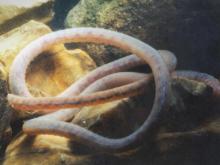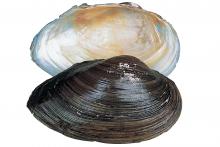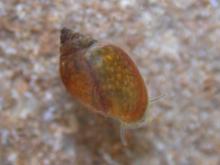Aquatic Invertebrates
Media

Species Types
Scientific Name
About 1,500 species in North America north of Mexico
Description
The aquatic larvae of caddisflies are famous for building portable, protective cases out of local materials, including grains of sand, bits of leaves and twigs, and other debris. The adults are mothlike.
Media

Species Types
Scientific Name
Tubifex spp. and other aquatic tubificid annelids
Description
Tubificid worms, as a group, include the tubifex worms that aquarists feed to their pet fish. These segmented worms are related to earthworms and like them are detritus eaters.
Media

Species Types
Scientific Name
Dugesia, Planaria, and other genera
Description
Unlike their parasitic cousins in the flatworm group, turbellarians, or planarians, are tiny carnivores or detritus-eaters that glide smoothly across submerged leaves and other objects.
Media

Species Types
Scientific Name
Podura aquatica
Description
In early spring, clusters of water springtails float on the surface of quiet waters, on muddy banks, and on protruding objects. Adults are bluish gray with reddish appendages.
Media

Species Types
Scientific Name
Pygandon grandis
Description
When a floater dies, this large mussel with a thick shell will actually rise to the water surface and float as it decays.
Media

Species Types
Scientific Name
Faxonius longidigitus (formerly Orconectes longidigitus)
Description
The longpincered crayfish is large and colorful, with very long, slender, blue-green pincers that are studded with prominent yellowish knobs. It is restricted to the White River basin in the Ozarks.
Media

Species Types
Scientific Name
Bivalve molluscs in order Unionoida
Description
Secretive and seldom seen, freshwater mussels are extraordinarily diverse in Missouri. We have nearly 70 species within our borders. Many are declining, and several are endangered.
Media

Species Types
Scientific Name
Over 20 Missouri species in former subclass Prosobranchia
Description
Gilled snails are one of two main groups of aquatic snails in Missouri (the other group is the "lunged" snails). Gilled snails, or prosobranchs, breathe with gills and possess a hard trapdoor-like operculum. They are most common in the Ozarks.
Media

Species Types
Scientific Name
Over 30 Missouri species in former subclass Pulmonata
Description
Pulmonate, or lunged snails breathe via a lunglike pulmonary cavity, and they lack the hard trapdoor-like operculum found in gilled snails. Except for in the Ozarks, pulmonate snails predominate in most of the aquatic regions in our state.
Media

Species Types
Scientific Name
Gyraulus, Helisoma, Menetus, Micromenetus, Planorbula spp.
Description
Ramshorn snails are easy to identify at a glance, because the shell is a flat, disklike coil. Like other pulmonate aquatic snails, they lack the hard horny “trapdoor” possessed by other types of aquatic snails.
See Also
About Aquatic Invertebrates in Missouri
Missouri's streams, lakes, and other aquatic habitats hold thousands of kinds of invertebrates — worms, freshwater mussels, snails, crayfish, insects, and other animals without backbones. These creatures are vital links in the aquatic food chain, and their presence and numbers tell us a lot about water quality.





















